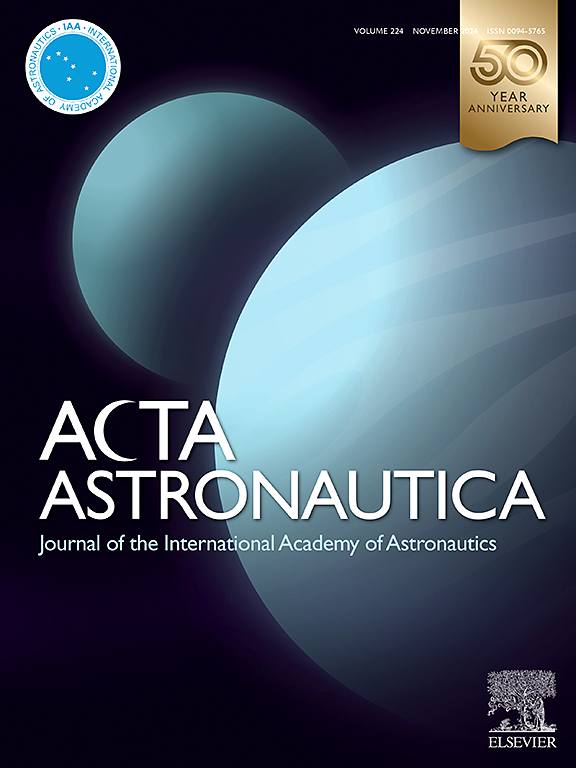Modified smoothing-homotopy-based sequential convex programming for ascent trajectory optimization with path constraints
IF 3.1
2区 物理与天体物理
Q1 ENGINEERING, AEROSPACE
引用次数: 0
Abstract
To meet the growing demands for reliability and onboard performance in launch missions, this paper introduces a modified smoothing-homotopy sequential convex programming (MSH-SCP) approach for endo-atmospheric ascent trajectory optimization problems with strict path constraints. Compared to the original SH-SCP, the proposed method introduces three major enhancements. Firstly, the convolution of the smoothing kernel is extended from the terminal state to all discrete states across the entire time domain. This alleviates the challenges posed by non-convexity in highly nonlinear ascent problems, resulting in an easier and more tractable smoothed problem. Secondly, by replacing states in path constraints with smoothed states, this method eliminates the need to transform path constraints into control constraints, allowing state constraints to be handled directly. Lastly, the continuous-time problem is discretized into a sequence of finite-dimensional sub-problems by parameterizing state and control variables using non-uniform rational basis spline (NURBS) curves. Leveraging from the superior fitting characteristics and strong convex hull properties of NURBS curves, optimization variables and constraints are reduced in number, markedly enhancing computational speed. Numerical simulations reveal that the MSH-SCP method achieves superior convergence behavior and exhibits significant improvements in computational efficiency.
带有路径约束的上升轨迹优化的改进光滑同伦序列凸规划
为满足发射任务对可靠性和机载性能日益增长的要求,提出了一种改进的光滑-同伦序贯凸规划(MSH-SCP)方法,用于具有严格路径约束的大气层上升弹道优化问题。与原来的SH-SCP相比,本文提出的方法引入了三个主要的增强。首先,将平滑核的卷积从终端状态扩展到整个时域的所有离散状态;这减轻了高度非线性上升问题的非凸性带来的挑战,使得光滑问题更容易处理。其次,通过将路径约束中的状态替换为平滑状态,消除了将路径约束转换为控制约束的需要,从而可以直接处理状态约束。最后,利用非均匀有理基样条(NURBS)曲线参数化状态变量和控制变量,将连续时间问题离散为一系列有限维子问题。利用NURBS曲线优越的拟合特性和强凸包特性,减少了优化变量和约束的数量,显著提高了计算速度。数值模拟结果表明,MSH-SCP方法具有优越的收敛性能,计算效率得到显著提高。
本文章由计算机程序翻译,如有差异,请以英文原文为准。
求助全文
约1分钟内获得全文
求助全文
来源期刊

Acta Astronautica
工程技术-工程:宇航
CiteScore
7.20
自引率
22.90%
发文量
599
审稿时长
53 days
期刊介绍:
Acta Astronautica is sponsored by the International Academy of Astronautics. Content is based on original contributions in all fields of basic, engineering, life and social space sciences and of space technology related to:
The peaceful scientific exploration of space,
Its exploitation for human welfare and progress,
Conception, design, development and operation of space-borne and Earth-based systems,
In addition to regular issues, the journal publishes selected proceedings of the annual International Astronautical Congress (IAC), transactions of the IAA and special issues on topics of current interest, such as microgravity, space station technology, geostationary orbits, and space economics. Other subject areas include satellite technology, space transportation and communications, space energy, power and propulsion, astrodynamics, extraterrestrial intelligence and Earth observations.
 求助内容:
求助内容: 应助结果提醒方式:
应助结果提醒方式:


